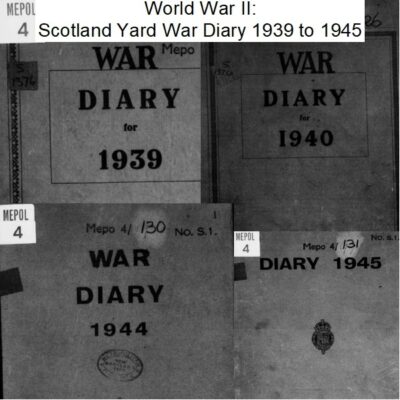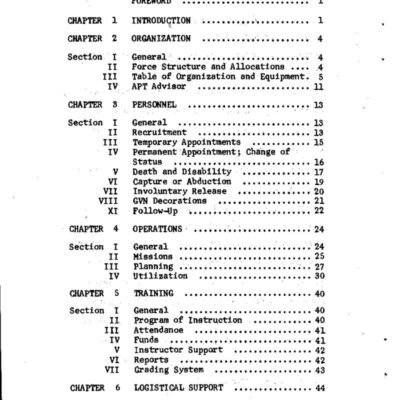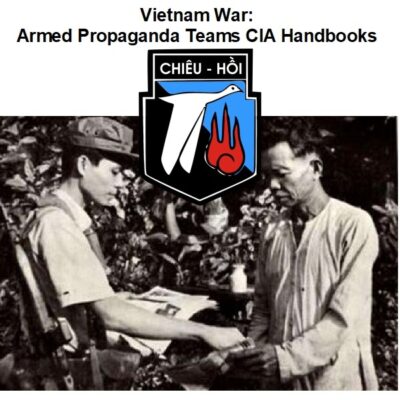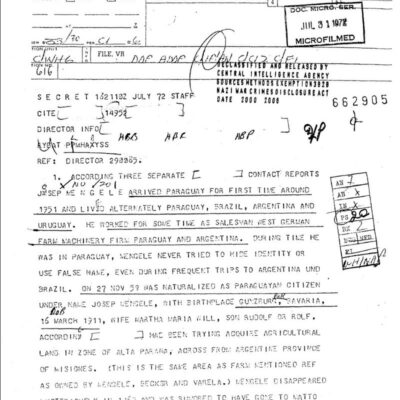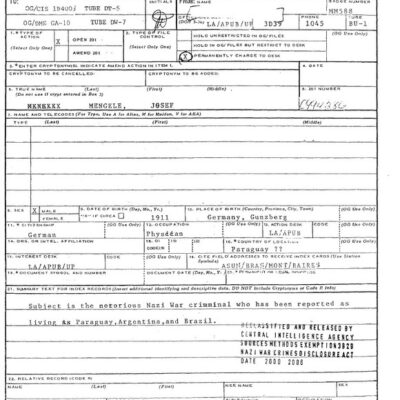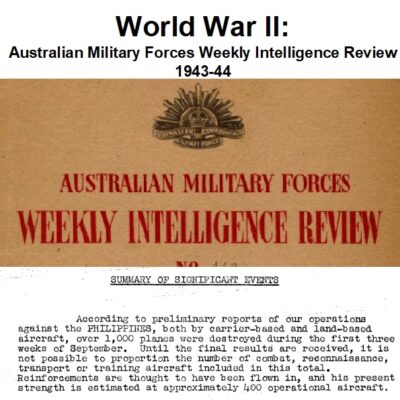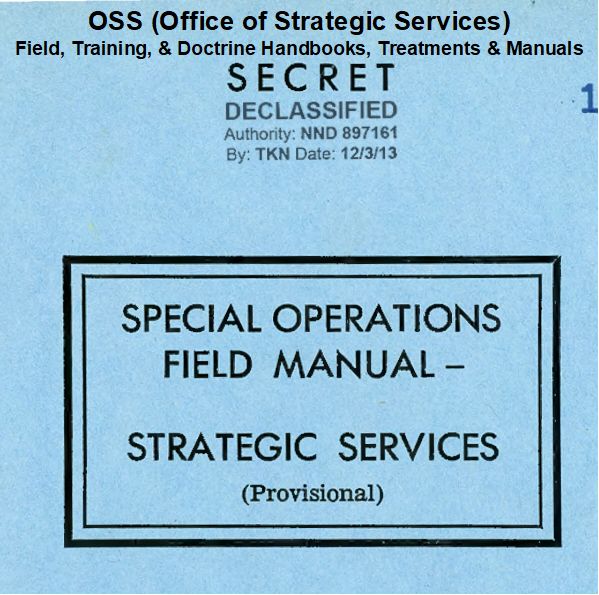
OSS (Office of Strategic Services) Field, Training, & Doctrine Handbooks, Treatments and Manuals
$19.50
Description
OSS History: Timeline and Key Figures
Pre-World War II (Prior to 1942):
- Origins of the OSS: “Wild Bill” Donovan is a key figure in the conceptualization and establishment of the Office of Strategic Services, though the exact date of his initial involvement isn’t specified in the provided text.
1942:
- Organization of Communications Branch (OSS) (1942): The Office of Strategic Services begins to establish its communications infrastructure and personnel.
1943:
- Morale Operations Field Manual — Strategic Services (Provisional) (1943): The OSS develops and publishes a manual outlining strategies for conducting morale subversion against the enemy.
1944:
- Simple Sabotage Manual (1944-01-17): The OSS publishes this manual, instructing ordinary citizens on how to perform simple acts of sabotage.
- Special Operations Field Manual — Strategic Services (Provisional) (February 23, 1944): The OSS develops a provisional field manual for special operations.
- Secret Intelligence Field Manual– Strategic Services (Provisional) (1944): The OSS issues a highly secret manual detailing operational principles, methods, and organization for secret intelligence gathering.
- Office of Strategic Services (OSS) Weapons Instructions & Ordnance Catalog (June 1944): The Special Weapons and Devices Research and Development Branch produces a comprehensive manual on personal weapons, harassing agents, incendiaries, explosives, and related accessories.
- A Selected Who’s Who in Vichy, France, June 1940-August 1944 (1994 publication, but covers this period): The OSS compiles information on key personnel within the Nazi-collaborator Vichy government in France, covering the period from its establishment through August 1944.
- Dissolution of the Nazi Party and its Affiliated Organizations – Civil Affairs Guide (1944): The OSS creates a guide related to the dismantling of Nazi structures.
- The Protestant and the Catholic Churches in Germany – Civil Affairs Guide (1944): The OSS prepares a guide concerning religious institutions in Germany.
- Extensive OSS Training in the National Parks (Ongoing throughout WWII): The OSS actively uses National Parks, such as Catoctin Mountain Park, for training its personnel, including spies, guerrilla leaders, saboteurs, and radio operators.
1945:
- Office of Strategic Services OSS Organization and Functions (1945): The OSS formalizes and documents its organizational structure and operational functions.
- End of World War II: The OSS concludes its primary mission as a wartime intelligence agency.
Post-World War II (After 1945):
- Assessment of Men – Selection of Personnel for the Office of Strategic Services (1947): The OSS Assessment Staff compiles a 565-page report detailing the psychological and psychiatric methods used to evaluate and select OSS personnel, based on assessments of 5,391 recruits.
- Japanese Social Structure (1947): The OSS creates a document analyzing the social structure of Japan.
- CIA Operations Against Guerrilla Forces (1950): The Central Intelligence Agency (CIA), a successor to the OSS, begins to document its operational strategies against guerrilla forces.
- CIA Handbook for Special Operations Sudan September 1963 (1963): The CIA develops a handbook for operations in Sudan.
- CIA intelligence Handbook for Special Operations Somali Republic (1966): The CIA creates an intelligence handbook for operations in the Somali Republic.
- CIA Headquarters Handbook – Procedures for Domestic Courier Operations (1968): The CIA establishes procedures for domestic courier operations within its headquarters.
- OSS Training in the National Parks and Service Abroad in World War II (2008): The National Park Service publishes a 712-page report detailing the history of OSS training in National Parks and its wartime activities.
Cast of Characters
- “Wild Bill” Donovan: A pivotal figure in the origins of the Office of Strategic Services (OSS). He is credited with leading the efforts to establish America’s first intelligence agency during World War II.
- OSS Assessment Staff: A group comprising psychologists and psychiatrists responsible for developing and implementing selection procedures for OSS personnel. They conducted intensive assessments of 5,391 recruits, with a focus on predicting human behavior and improving diagnostic and selection methods in clinical psychology and psychiatry.
- Ordinary Individual Citizen-Saboteur: A concept defined in the “Simple Sabotage Manual.” This refers to an individual who performs simple acts of sabotage without requiring specialized tools, equipment, or active connection with an organized group, aiming for minimal danger of injury, detection, and reprisal. They are not named individuals but represent a category of operative.
- Specially Trained Operatives: Individuals mentioned in the “Simple Sabotage Manual” who execute “highly technical coup de main acts that require detailed planning” and specialized training, in contrast to citizen-saboteurs.
- Superior Officers (of OSS personnel): These individuals were responsible for describing and rating the performances of 1,187 OSS recruits who were deployed overseas, as mentioned in the “Assessment of Men” report.
- Vichy Government Personnel: The “A Selected Who’s Who in Vichy, France, June 1940-August 1944” lists top personnel of the French State under Nazi collaborator control, including diplomatic service, press, radio, and political parties. While no specific names are given in the excerpt, it indicates a compilation of significant figures from that regime.
OSS (Office of Strategic Services) Field, Training, & Doctrine Handbooks, Treatments and Manuals
The Office of Strategic Services (OSS) is often called America’s first intelligence agency. Founded during World War II, The Office of Strategic Services, better known by its acronym OSS, was a predecessor of the Central Intelligence Agency (CIA). The OSS was formed to coordinate espionage activities behind enemy lines. The Agency defined itself as, “The Office of Strategic Services (OSS) is an agency of the Joint Chiefs of Staff charged with collecting and analyzing strategic information and secret intelligence required for military operations, and with planning and executing programs of physical sabotage and morale subversion against the enemy to support military operations.”
This collection includes a total of 3,275 pages. All computer recognizable text, transcriptions, reproduced printed text, and description sheets in the collection are searchable.
OSS Field, Training, & Doctrine Manuals 2,153 pages in 29 OSS publications. Highlights include:
Simple Sabotage Manual 1944-01-17 Field Manual – Strategic Services (Provisional) (1944) – The purpose of this manual is to characterize simple sabotage, to outline its possible effects, and to present suggestions for inciting and executing it.
Abstract: Sabotage varies from highly technical coup de main acts that require detailed planning and the use of specially trained operatives, to innumerable simple acts which the ordinary individual citizen-saboteur can perform. This paper is primarily concerned with the latter type. Simple sabotage does not require specially prepared tools or equipment; it is executed by an ordinary citizen who may or may not act individually and without the necessity for active connection with an organized group; and it is carried out in such a way as to involve a minimum danger of injury, detection, and reprisal.
Office of Strategic Services (OSS) Weapons Instructions & Ordnance Catalog – A 111-page OSS illustrated manual covering personal weapons, harassing agents, incendiaries, automotive attack, explosives, firing devices, and accessories. The document was produced by the Special Weapons and Devices Research and Development Branch Office of Strategic Services, Washington D.C. in June 1944
A Selected Who’s Who in Vichy, France, June 1940-August 1944 (1994) – Lists of the top personnel of the Vichy government (the French State under Nazi collaborator control), diplomatic service, press, radio, and political parties, with an accompanying alphabetical Who’s Who.
Assessment of Men – Selection of Personnel for the Office of Strategic Services written by the OSS Assessment Staff – A 565-page report created by the OSS Assessment Staff in 1947 detailing the process in which OSS personnel were evaluated and selected.
Abstract: This volume is the account of how several psychologists and psychiatrists attempted to assess the merits of men and women recruited for the Office of Strategic Services. The undertaking is reported because it represents the first attempt in America to design and carry out selection procedures in conformity with so-called organismic (Gestalt) principles. As a novel experiment it might interest a wide range of readers, but more specifically we hope it will invite the attention of those who are concerned with the problem of predicting human behavior, especially if they are engaged in practicing and developing clinical psychology and psychiatry and in improving present methods of diagnosis, assessment, and selection. All told, 5,391 recruits were studied intensively over a three-day period at one station or over a one-day period at another. These were the two areas in the United States where the bulk of assessment was done. Of these the performances of 1,187 who went overseas were described and rated by their superior officers.
Secret Intelligence Field Manual– Strategic Services (Provisional) (1944) – This manual sets forth the operational principles, methods, and organization of Secret Intelligence as a part of Strategic Services activities, exclusive of that obtained by counter-espionage methods, which is covered by a separate manual. Its purpose is to provide guidance to authorized Strategic Services personnel engaged in operational planning and training in Washington and at field bases. In view of its highly secret nature, this manual will be given a very limited distribution.
The other OSS publications include:
SO Branch OSS ETO Code Words and Operations
OSS Glossary of Initialisms, Abbreviations, and Acronyms
Special Operations Field Manual — Strategic Services (Provisional) February 23, 1944
Dissolution of the Nazi Party and its Affiliated Organizations – Civil Affairs Guide (1944)
Japanese Social Structure (1947)
Morale Operations Field Manual– Strategic Services (Provisional) (1943)
Office of Strategic Services – Reports – Hints on Life in Egypt
Office of Strategic Services OSS Organization and Functions (1945)
OSS – Recruiting and Training Program for Communications Personnel-
Organization of Communications Branch (1942)
The Protestant and the Catholic Churches in Germany – Civil Affairs Guide (1944)
Additional Material in this collection includes:
CIA Manuals, four CIA manuals:
CIA Operations Against Guerrilla Forces (1950)
CIA Headquarters Handbook – Procedures for Domestic Courier Operations (1968)
CIA Handbook for Special Operations Sudan September 1963 (1963)
CIA intelligence Handbook for Special Operations Somali Republic (1966)
NPS History
OSS Training in the National Parks and Service Abroad in World War II (2008)
A 712-page report produced in 2008 by the National Park Service covering the origins of the OSS and its use of National Parks for training and organization.
Chapter headings include:
“Wild Bill” Donovan and the Origins of the OSS
A Wartime Organization for Unconventional Warfare
Converting Catoctin Mountain Park into Military Camps
Instructing for Dangerous Missions
Daily Life in Camp, Park and Town
OSS in Action: Mediterranean and European Theaters
OSS in Action: The Pacific and the Far East
Abstract: Because of the secrecy that enveloped the U.S. Office of Strategic Services in World War II, it surprises most people, including nearby residents, to learn that spies were trained in some of the National Parks—not just spies but guerrilla leaders, saboteurs, clandestine radio operators and others who would be infiltrated behind enemy lines.

